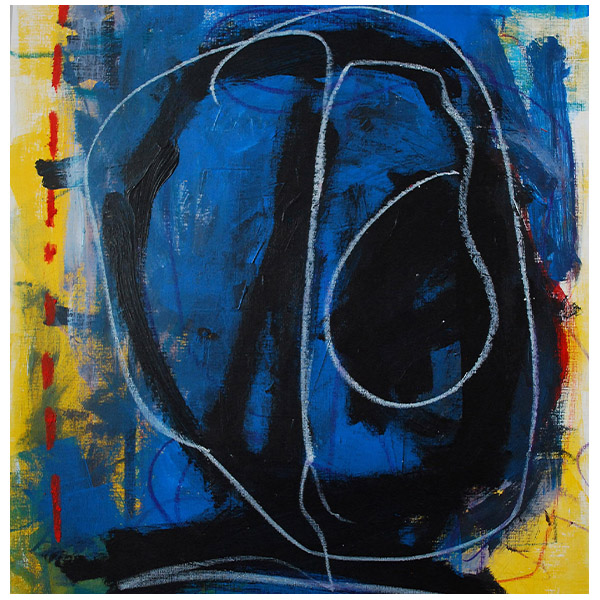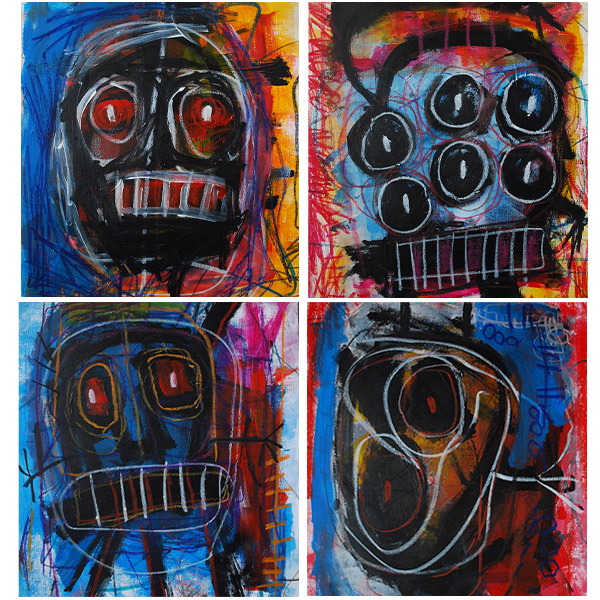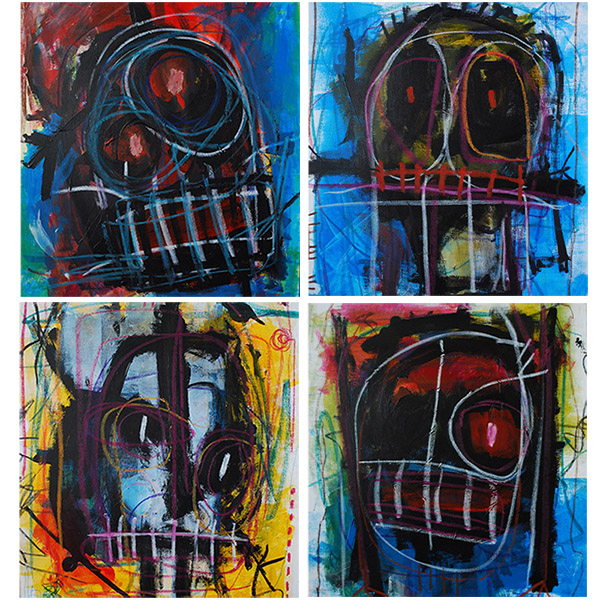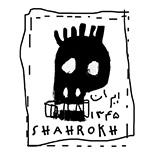Nine Portraits



Acrylic, Oil Pastel and Colour Pencils on Acrylic Paper 40.6cm x 50.8cm
3.30am Studies
Inspired by the work of the avant-garde expressionist greats, Shahrokh Nael unveils nine of his most challenging and provocative paintings. Each of these self-portraits was realised at 3.30am, sitting within the darkest depths of the night – at the midpoint of the juncture traditionally identified in folklore as ‘the witching hour’ – to solidify the ghosts of his subconscious mind. Enlivened with thick, wadded brushstrokes, messy, brawling hues and loose, spidery scrawls, these incendiary studies appear to be the illicit offspring of Picasso’s Weeping Woman and the ever-haunting visage of Edvard Munch’s Scream.
Arranged within a sharply delineated window pane, this rogues gallery of lurid death masks is immediately arresting and impossible to ignore. Juddering with angst and riding on choppy waves of contrasting colours, these psychedelic avatars bridge the gap between dimensions – unwilling or unable to conform to the etiquette of this reality but determined that they should impress their designs upon it nonetheless.
The clean lines that constrain them, on the other hand – combined with the alien, robotic quality of the pieces themselves – suggests a dissociation between the subject and the boundaries that frame his existence. Boxed into stackable units, these closely confined entities present like a rabble of extraterrestrial inmates incarcerated within an unstable yet timeless otherworldly prison.
Despite these limitations, however, our ‘talking heads’ possess a raw, untamed, organic energy – a gleeful ferocity that, like any force of nature, simply refuses to be constrained by the flimsy partitions we vain bipeds construct to hold them in check. These contrasting layers reveal the tyrannical orthodoxy inherent in both contemporary Western society and the wilful excesses of the Iranian regime that gripped the artist’s homeland as a young man.
Craning from the page and jostling to free themselves from their respective cells, these unruly portraits hint that such oppressive conformity – and expectant order – inevitably incubates an effervescent volatility that cannot help but burst its banks and seep into the ground that surrounds it. Seething with unbridled eccentricity, these images both communicate and facilitate the instinctive urge to colour outside the lines – to expand beyond the neatly defined psychic boundaries imposed upon us by a homogenised culture that demands polite, obedient submission by its citizenry.
When we gaze into the burning eyes of these macabre spectres, we may glimpse an altogether different side to human nature, however. To dive into these inexplicable voids is to tumble into a dark, roiling well of passions – churning with both transformative potential and implicit danger. Standing upon the precipice of such lawless abandon is akin to peering into the eye of Sauron – surveying the bristling fires of Tolkien’s epic-forging Mount Doom – or confronting the many dreadful Hellmouths depicted by artists throughout the Middle Ages.
And yet, for all of their anarchic fervour, these thorny abstractions still manage to exude a glimmer of playful innocence – like a child’s doodles tacked to a fridge in some terrifying technicolour netherworld. To associate such uncomfortable images with the notion of ‘innocence’ might appear contradictory – but that’s precisely the point – because what is innocence if not the spontaneous, unscripted, just-for-the hell-of-it insistence that one’s heartfelt emotions must find full and potent expression?
Written by KJL.
Date of Publication: 09/12/2021
